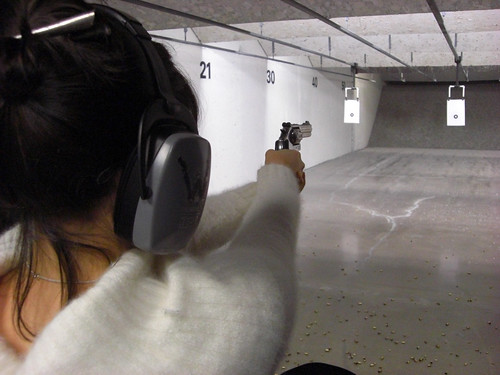It’s just a rant, but it’s one I can relate to. Autotools must die:
But autotools was a kluge. And it did accrete kluges and crocks around it, adding layers of complexity until it became sore difficult to tell which end was up. And lo, it became a festering pile of special cases and obscure semi-documented rules, leading to a combinatorial explosion of unplanned interactions and obscure lossage.
Some good comments too.
Comments Off on
A harmonograph is a mechanical device that uses swinging pendulums to draw pictures, believed to be originally invented in 1844 by Scottish mathematician Hugh Blackburn. There are other types of harmonographs, but this 3-pendulum rotary type gives a wide variety of pleasant results, and is fairly easy to build once you’ve settled on a design and have acquired the appropriate materials and tools. This is a great project to do with kids and can result in endless experiments creating new types of geometric designs.
Comments Off on How to Build a Three-Pendulum Harmonograph
In this tutorial you will learn how to control the AD5206 digital potentiometer using Serial Peripheral Interface (SPI). Digital potentiometers are useful when you need to vary the resistance in a ciruit electronically rather than by hand. Example applications include LED dimming, audio signal conditioning and tone generation.
Comments Off on Using an arduino to control a digital potentiometer
Comments Off on Synthesis of various percussion sounds
Comments Off on Notes for an Arduino-based midi device implementation
Instructions for making your own oLED using ordinary household tools – Q-tips, aluminum foil, duct tape, a microwave, a hair dryer, and a multimeter.
Comments Off on How to make your own oLED at home
After 120 years, Toshiba will stop producing incandescent light bulbs, switching instead to LEDs and compact-fluorescents.
Comments Off on At Wade’s with Ava
I seem to have snapped out of a creative funk. During the last day I have spent time thinking about, doing background research on, designing, or actively working on the following projects:
– LED poi for Ava (thinking about a simpler graphics algorithm)
– Automatic drum sequencer (tweaking algorithm, thinking about hardware)
– Bassline sequencer (rhythm is obvious, need some input for chord progressions and some kind of complex arpeggiator)
– Device for controlling large numbers of LEDs in rhythmic patterns (for a party later this summer)
– Multi-band, multi-source mixing audio compressor (looks workable but hard to do without lots of computing horsepower; arduino is probably not enough)
– Rearranging my music box so I can place the keyboard behind the rest of the controls (better ergonomics)
– Custom kick-drum synthesizer/MIDI metronome device (what goes into a solid kick drum sound?)
– Jacket design involving irregular vertical pleats (bought some fabric and buttons; simple design, interesting texture)
Right, so, what have I been up to?
I had a cold for a week. Lots of coughing.
I’ve been getting down to the last petty annoyances on my motorcycle to-do list. I’ve replaced the control levers, replaced the clutch lever bushing – it actually pulls straight and smooth now, for the first time since I’ve owned it! – replaced the broken seat latch, replaced all the worn-out rubber bushings that hold the side panels on, replaced the headlight element (the high-beam didn’t work). The carbs need to be cleaned & synchronized, but that’s a bigger job than I want to deal with myself, so I took the bike over to Steg’s shop. Perfect timing, since we’re having a serious cold snap today! The bike will be in great shape by the time spring arrives in earnest.
I’ve been playing with an algorithm for generating percussion sequences. The idea is to create an instrument I can add to my music machine that will let me create and adjust percussion tracks on the fly, driving a MIDI drum module. The central conceit of my music project is that I want to create as live a performance as possible, and if this thing works out it’ll let me improvise drum tracks from scratch instead of just tweaking the ones I’ve prepared ahead of time.
The algorithm works surprisingly well, for the simplicity of its design. It’s based on Toussaint’s paper The Euclidean Algorithm Generates Traditional Musical Rhythms, in turn based on Bjorklund’s timing system for a neutron accelerator, The Theory of Rep-Rate Pattern Generation in the SNS Timing System. It all sounds very high-tech, but the basic idea is simply this: natural-sounding rhythms are those which distribute their energy as evenly as possible across the repetition unit.
Comments Off on


